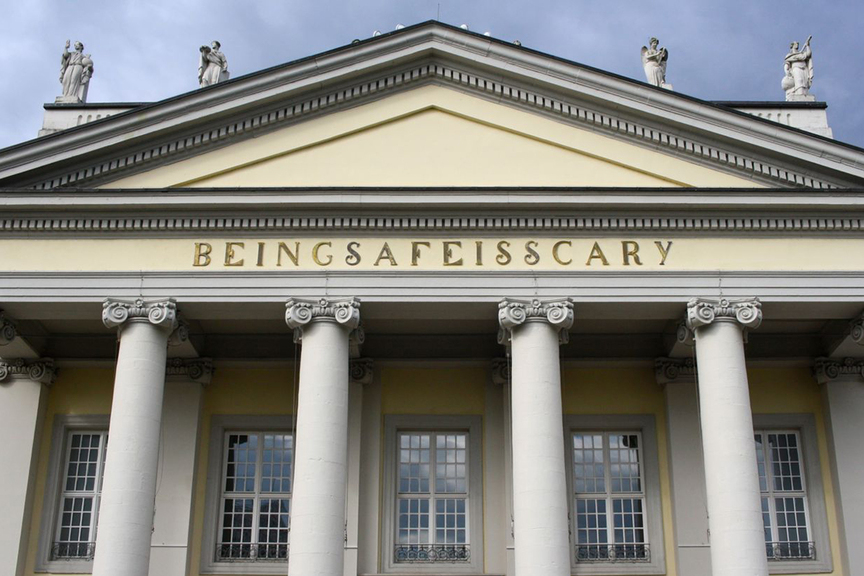
R
E
V N
E
X
T
MARTA MINUJÍN’s The Parthenon of Books has been underway since October 2016 on Friedrichsplatz, Kassel. Originally created in Buenos Aires in 1983 with 25,000 books locked up during a military dictatorship, it consists of a 1:1 scale model of the Parthenon, whose columns and edifice are still being wrapped in copies of banned books from around the world. All photos by HG Masters for ArtAsiaPacific.
Endurance. That seems to be the requisite criteria for visitors and the creators of Documenta 14. The first act has already opened in Athens, beginning in early April, at 40-plus venues with artworks by more than 160 artists; the second half, with just as many artists, is debuting in Documenta’s native city, Kassel, this weekend, for its traditional 100-day run. The question of why Athens and Kassel are both staging grounds for the art festival gets at the essential, didactic (and essentially didactic) issues in this edition of the quinquennial. The curatorial team offered up various interpretations for this alternative choice of destinations and geographic displacement, saying Documenta was “in transition” or in the processes of “dis-othering.” Yet the fraught, quasi-colonial relationship between north and south, across the globe and within Europe, went largely unspoken here in Germany. The southeastern European capital, known for its ancient civilization central to Europe’s conceptions of itself, is now infamous for a recent scourge of economic and social struggles, and has become the site where Europe finds itself in its greatest uncertainty, growing even more radically fascist as the EU’s neoliberal system breaks down under the strains of oligarchy, corruption and migration stemming from conflicts on its borders. The title given to Documenta 14 for its first act in Greece, “Learning from Athens,” was pilloried by critics for its perceived colonialist attitude toward Greece and its overtones of crisis tourism (though that didn’t dissuade public programs curator Paul B. Preciado from announcing that the curators were all Athenians now after working in the city for two years), and was barely mentioned in Kassel during the course of a tedious, nearly three-hour press conference that was more of a sermon-seminar than information session. With each venue engaged in a different approach, the initial impression is one of many parts that don’t really coallesce. The effects of organizing what amount to two editions of Documenta at once, within three months, clearly have taken its toll on curators and many artists too, who made new works for both locations. Nonetheless, there is a massive amount of art and venues to see in Kassel, so here’s a first look at the Fridericianum and the Neue Neue Galerie, as well as sites in between.
Documenta 14’s program in Kassel runs from June 10 to September 17, 2017.
To read more of ArtAsiaPacific’s articles, visit our Digital Library.




